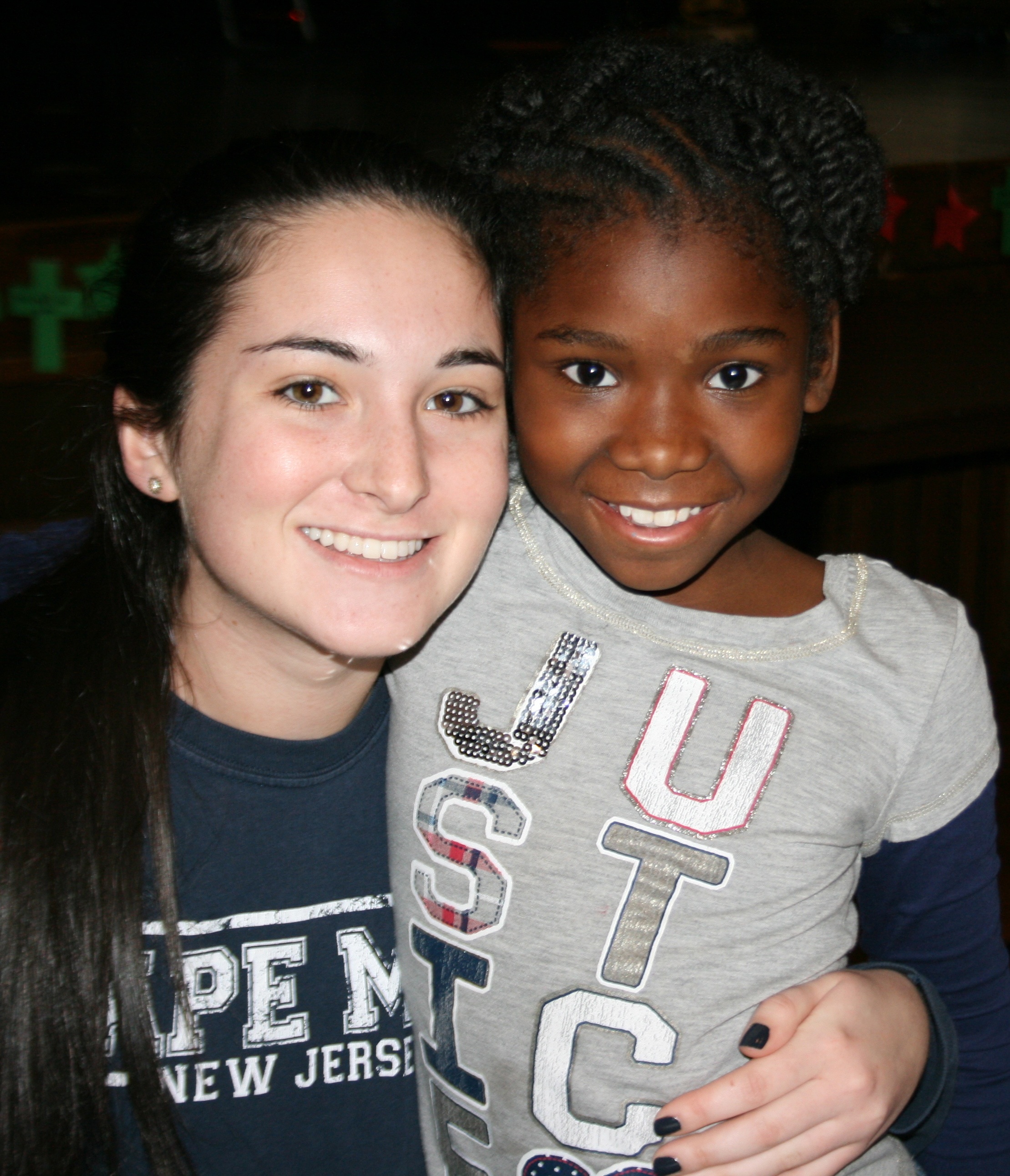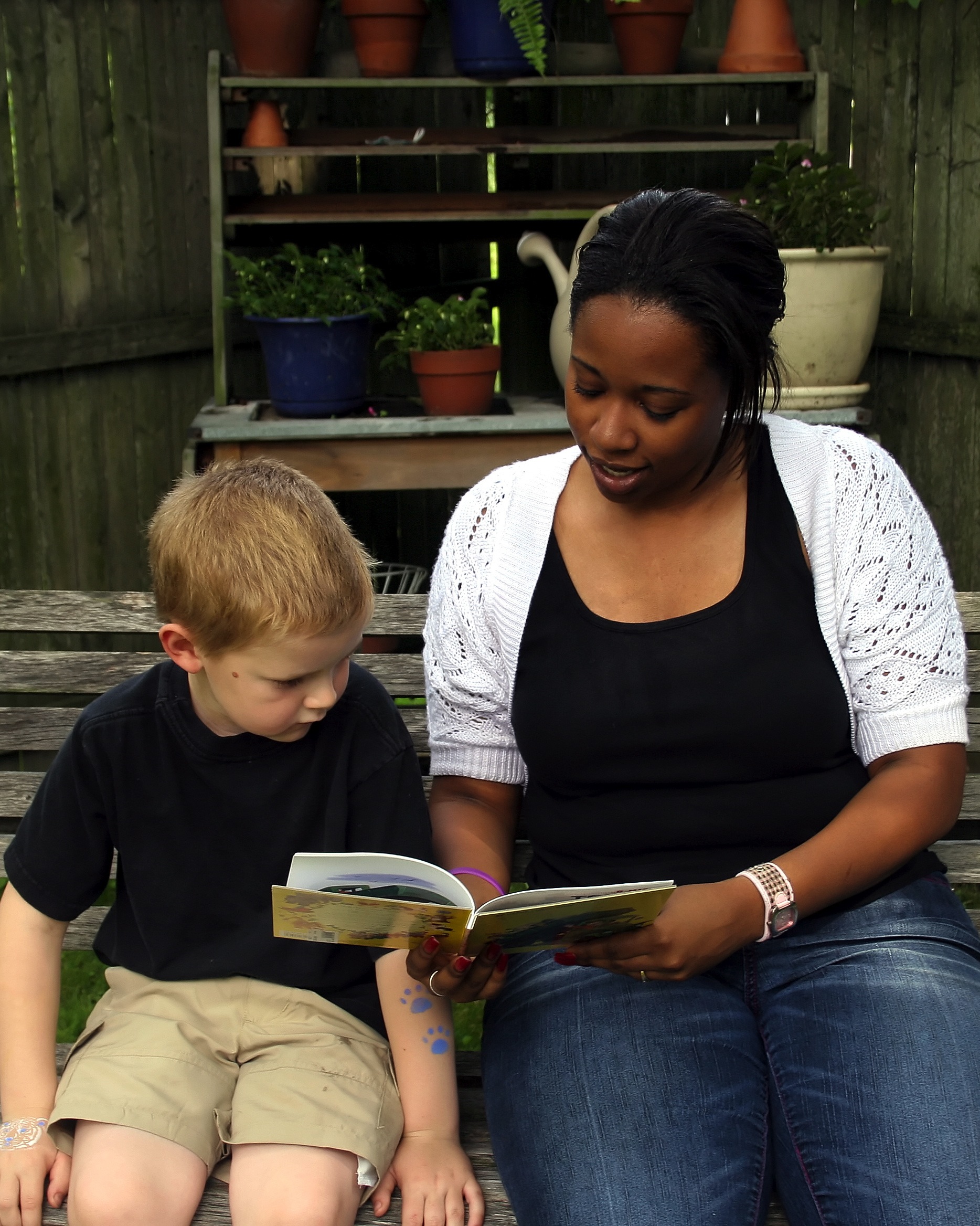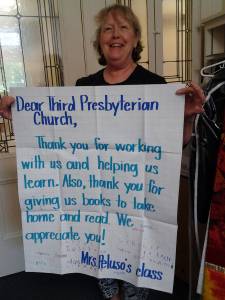 The “Educate A Child” National Initiative seeks to equip the diverse congregational programs that enable children to gain access and success in education. Congregations across the PC(USA) are already enacting a wide variety of programs addressing virtually every facet of education, formal and informal. Together, Presbyterians have come to sense a calling in supporting children in their communities in their educational pursuits. Such programs are the foundation of this initiative, the bedrock of a growing network of Presbyterian congregations.
The “Educate A Child” National Initiative seeks to equip the diverse congregational programs that enable children to gain access and success in education. Congregations across the PC(USA) are already enacting a wide variety of programs addressing virtually every facet of education, formal and informal. Together, Presbyterians have come to sense a calling in supporting children in their communities in their educational pursuits. Such programs are the foundation of this initiative, the bedrock of a growing network of Presbyterian congregations.
To help bring focus to an initiative of such breadth and diversity, we have begun to give priority to two areas of child advocacy related to education: Early Childhood Education and Reduction of the School Drop-Out Rate. Congregations seeking to take part in the initiative may focus on one or both of these options and will increasingly find resources from the staff team and other congregations for addressing these concerns.
Early Childhood Education
There is no period in the human life-cycle that holds such far-reaching consequence as do the early childhood years. This formative period of critical development shapes what will be possible in a child’s future. A large number of Presbyterian churches, perhaps even a majority, are already engaged through the use of their buildings in providing early childhood education. However, only about half of the programs in our church buildings are operated by the congregation themselves.
 This initiative calls congregations to discover anew whether they are enabling high-quality early child education – and if not, how they might begin to do so. It invites congregations to reflect on the work they are already doing: Who are the children who are being served? Who does not have the financial resources to attend? How can the congregation help to make the environment a place of safety and security for children?
This initiative calls congregations to discover anew whether they are enabling high-quality early child education – and if not, how they might begin to do so. It invites congregations to reflect on the work they are already doing: Who are the children who are being served? Who does not have the financial resources to attend? How can the congregation help to make the environment a place of safety and security for children?
Early childhood programs of high quality pay lifelong dividends for the children who attend in better physical and mental health, higher educational achievement, and better employment opportunities. Through such programs, the church has access to large numbers of children and their families. Such access enables congregations to learn, firsthand, the challenges faced by young children and their families. Equipped with this knowledge, congregations can respond more effectively in addressing the stumbling blocks that confront and confound preschool children in their earliest educational endeavors.
Even congregations that do not operate or house early childhood education programs can help this youngest, most vulnerable group of children. Centers for homeless families need toys, games, and specialized food for infants and children. Agricultural areas have an intense need for childcare programs during the picking seasons, when small children often have nowhere to go while their families work long hours. Rural communities often lack early childhood programs, which offer socialization opportunities and respite from the isolation experienced by many young parents and children in these areas.
If we are to do a better job of educating children in America, it will need to begin with the youngest.
Adolescent School Drop Out Rate
In the United States today, 1.2 million children per year stop their formal education by dropping out of school. Every 26 seconds, a student drops out of school, totaling 7,000 dropouts per day. Ultimately, 25% of our children do not graduate on time. The pattern of dropping out of high school is a burden carried far more commonly by children in racial ethnic, immigrant, and rural communities. While the nationwide dropout rate stands at 7% of all students, 8% of African American students and 13% of Hispanic students drop out of high school.
 As a consequence, these young people face a future of diminished possibilities, lower income, and fewer intangible rewards of meaningful work. Put bluntly, they are set on a track for lives that fall short of the lives for which they were created.
As a consequence, these young people face a future of diminished possibilities, lower income, and fewer intangible rewards of meaningful work. Put bluntly, they are set on a track for lives that fall short of the lives for which they were created.
Perhaps most disturbing is the reality that the pattern of school dropout is not always the benign decision of an adolescent. This loss of young people is often better understood as a “push-out” rate, one which has at its heart questions of inequality based on race, economic class, and ethnicity. There are 2,000 high schools in the US that graduate less than 60% of their students. These ‘dropout factories’ account for almost 50% of the high school dropouts in the country.
The church often has proximity and resources to help young people find the wherewithal and resources they need to stay in school. Moreover, congregations can work together with other congregations and community organizations to identify practices within their school districts that contribute to the pattern of leaving school. Working together with students, teachers, families, other organizations, congregations can unite across lines of denomination, theology, politics, race, class, etc. to advocate for those systemic changes that will reduce the dropout rate.
 As we live into this initiative, we trust that the creativity of the Holy Spirit, the Advocate, will move through Presbyterians across the country to work toward these two foci in their local contexts in ways that we cannot yet envision. Through this initiative, we believe that we can share the stories of our varied journeys with children toward the full achievement of their educational hopes and dreams. Those participating in this faithful work may be encouraged by the companionship of other Presbyterians, be instructed by the ‘best practices’ identified along the way, and be inspired by the ways in which such advocacy brings to children the abundant life for which Jesus prayed.
As we live into this initiative, we trust that the creativity of the Holy Spirit, the Advocate, will move through Presbyterians across the country to work toward these two foci in their local contexts in ways that we cannot yet envision. Through this initiative, we believe that we can share the stories of our varied journeys with children toward the full achievement of their educational hopes and dreams. Those participating in this faithful work may be encouraged by the companionship of other Presbyterians, be instructed by the ‘best practices’ identified along the way, and be inspired by the ways in which such advocacy brings to children the abundant life for which Jesus prayed.
All statistics from the National Center for Education Statistics (nces.ed.gov) and DoSomething.org.